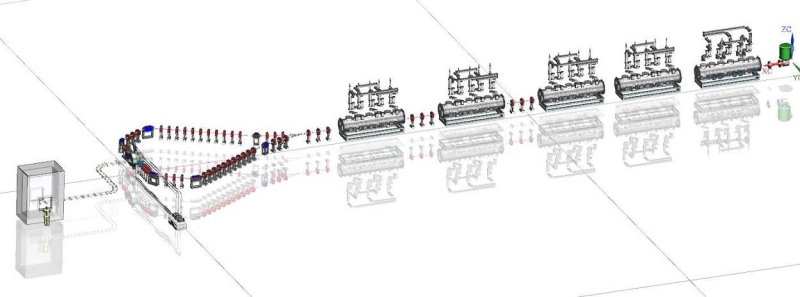
ASML’s medical-isotope brainchild doesn’t make it to the finish line
A method conceived by ASML to produce the medical isotope technetium-99m (Tc-99m) without nuclear reactors won’t be put into practice anytime soon. IRE, the Belgian supplier of radiopharmaceuticals that was hoping to industrialize the technology, has decided not to go through with it, a spokesperson confirmed to Bits&Chips. “Management decided to stop the project because it wasn’t sustainable in the long term.”
ASML stumbled upon the technique while evaluating free-electron lasers as EUV light sources. A bombardment of high-energy particles transformed ‘regular’ molybdenum (Mo-100) in molybdenum-99 (Mo-99), which radioactively decays to the Tc-99m routinely used in hospitals to diagnose heart diseases and cancer. The radioisotope is by far the most used in nuclear imaging.
And yet, as an ASML researcher had learned from a TV show, its supply is in danger: the world’s nuclear reactors used to manufacture Mo-99 from enriched uranium are aging. Adding to the woes are issues that are inextricably linked to all nuclear technology: safety, waste management and proliferation concerns.
Not being a core business, ASML had no interest to pursue the opportunity to alleviate this situation, but, given the societal relevance, the Veldhoven-based equipment manufacturer was willing to support it. Together with non-profit IRE and other partners, it started the Lighthouse consortium to investigate the potential of using linear electron accelerators to produce the flagship radioisotope.

Insurmountable
The project was elevated to National Icon by the Dutch government in 2016 (link in Dutch). This status is supposed to facilitate access to government funding and support, but for unclear reasons, all requests for assistance fell on deaf ears even when the required private funding had been secured. The consortium eventually moved to IRE’s home base Belgium, whose government proved far more cooperative.
“Outrageous,” said the usually diplomatic ASML CEO Peter Wennink about Lighthouse getting the cold shoulder, suspecting a powerful nuclear lobby had thwarted the project (link in Dutch). The Dutch High Flux reactor in Petten is Europe’s main manufacturer of raw medical isotope material – IRE is its largest customer. Having turned 60 this year, it’s nearing retirement after many planned and unplanned shutdowns in the recent past. The decision-making process about a replacement has been sluggish, to say the least.
It might be a coincidence, but the successor in Petten has recently been given the go-ahead (link in Dutch). If IRE would have gained the ability to manufacture Mo-99 by itself, the business case for a new reactor would have been severely weakened.
But the uranium-free Mo-99 production technique wasn’t to be. Despite reaching a major milestone last year, the Smart project, as Lighthouse came to be known after setting up shop in Belgium, “encountered insurmountable technological problems” in the final phase of feasibility studies, the IRE spokesperson said. “It’s unfortunate that IRE has come to the conclusion that it’s not feasible for them to continue the project,” ASML told Bits&Chips.





